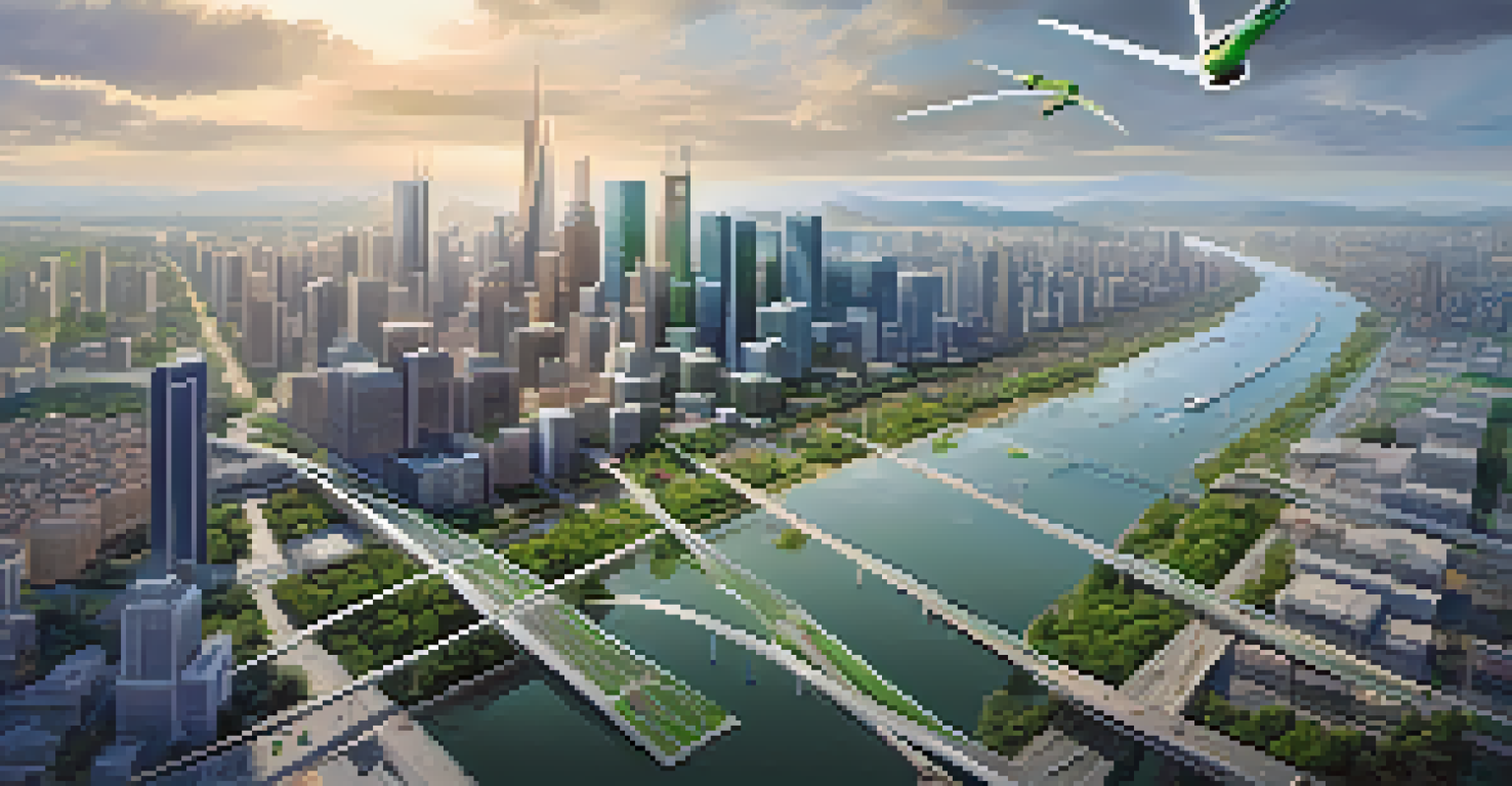The Role of Technology in Enhancing Urban Resilience

Understanding Urban Resilience and Its Importance
Urban resilience refers to a city's ability to withstand and recover from various challenges, including natural disasters, economic shifts, and social disruptions. As urban areas grow, they face increasing risks from climate change, population density, and infrastructure strain. Resilience is not just about bouncing back; it's about adapting and thriving in the face of adversity.
Resilience is about being able to overcome the unexpected. Sustainability is about survival.
For instance, cities like New Orleans have had to rethink their strategies post-Hurricane Katrina, focusing on building systems that are not only robust but also flexible. This shift emphasizes the need for ongoing investments in urban infrastructure to enhance public safety and quality of life. By understanding the core elements of urban resilience, cities can better prepare for future challenges.
Ultimately, urban resilience is essential for sustainable development, ensuring that cities remain livable and functional in the long term. As we delve deeper into the role of technology, we'll see how innovative solutions can significantly bolster this resilience, making cities safer and more adaptable.
The Impact of Smart Technologies on Urban Resilience
Smart technologies, such as IoT (Internet of Things) devices, play a critical role in enhancing urban resilience. By collecting real-time data, these technologies help city officials make informed decisions during emergencies, such as natural disasters or public health crises. For example, sensors can monitor air quality, traffic patterns, and even structural integrity of buildings, providing vital insights for timely interventions.

Moreover, smart technologies enable better resource management. For instance, intelligent water management systems can detect leaks and optimize water distribution, ensuring that cities use resources efficiently. This not only conserves vital resources but also minimizes the impact of droughts or flooding, thereby strengthening resilience.
Urban Resilience Enhances Sustainability
Urban resilience enables cities to adapt and thrive amidst challenges, ensuring long-term livability and sustainability.
As urban areas continue to adopt smart technologies, the capacity to analyze and respond to various challenges will improve significantly. This shift towards a data-driven approach allows for proactive rather than reactive measures, paving the way for a more resilient urban future.
Leveraging Big Data for Better Urban Planning
Big data has revolutionized urban planning by providing valuable insights into patterns and trends that affect city life. By harnessing data from multiple sources, including social media, transportation systems, and public services, planners can make more informed decisions. For example, analyzing traffic data can help optimize public transport routes, reducing congestion and improving accessibility.
The future belongs to those who believe in the beauty of their dreams.
Additionally, big data can aid in identifying vulnerable populations within cities, allowing for targeted interventions during crises. By understanding where resources are needed most, city officials can allocate support more effectively. This proactive approach not only enhances safety but also fosters a sense of community resilience.
As cities increasingly embrace big data analytics, the potential for creating sustainable, resilient urban environments grows. The insights gained from data can lead to smarter policies and practices that benefit all residents, ultimately contributing to a more robust urban ecosystem.
Resilient Infrastructure: The Role of Technology
Technology plays a vital role in developing resilient infrastructure that can withstand various challenges. Advanced materials and construction techniques are now being used to create buildings that are more earthquake-resistant, flood-proof, and energy-efficient. For instance, innovations like self-healing concrete and flexible building designs can significantly enhance structural integrity.
Moreover, integrating technology into infrastructure management allows for real-time monitoring and maintenance. Sensors embedded in roads and bridges can detect wear and tear, alerting authorities to potential issues before they escalate. This predictive maintenance approach helps prevent disasters, ensuring that infrastructure remains safe and functional.
Smart Tech Boosts Disaster Response
The integration of smart technologies, like IoT and drones, significantly improves cities' capacity to respond to emergencies effectively.
By investing in resilient infrastructure powered by technology, cities can ensure that essential services, such as transportation and utilities, remain operational during crises. This resilience not only protects physical assets but also enhances the overall quality of life for residents.
Community Engagement Through Digital Platforms
Engaging communities is a crucial aspect of building urban resilience, and technology can facilitate this engagement. Digital platforms enable residents to voice their concerns, share experiences, and contribute to decision-making processes. For example, mobile apps allow citizens to report issues like potholes or broken streetlights directly to city officials, fostering a sense of ownership and responsibility.
Moreover, social media serves as a powerful tool for communication during emergencies. Cities can disseminate critical information quickly, helping residents stay informed and prepared. This real-time communication strengthens community bonds and ensures that everyone is on the same page during crises.
Ultimately, technology empowers communities to take an active role in enhancing urban resilience. By fostering collaboration between residents and local authorities, cities can create more inclusive and adaptable environments that are better equipped to face challenges.
Innovative Solutions for Disaster Management
Technology has introduced innovative solutions for disaster management, transforming how cities respond to crises. For instance, drone technology is now used for aerial surveys during disasters, providing real-time imagery that helps assess damage and plan recovery efforts. Drones can quickly reach areas that are difficult for ground teams to access, ensuring that aid is delivered where it's needed most.
Additionally, simulation software can model potential disaster scenarios, allowing cities to test their emergency response plans. By identifying weaknesses in their strategies, officials can make necessary adjustments and improve overall preparedness. This proactive approach not only saves lives but also minimizes economic losses during disasters.
Community Engagement is Key
Engaging communities through digital platforms empowers residents to contribute to urban resilience efforts and enhances collaboration with local authorities.
As cities continue to adopt these innovative technologies, their capacity to manage disasters effectively will increase. This advancement in disaster management not only protects infrastructure but also strengthens community resilience by ensuring that residents receive timely support when they need it most.
The Future of Urban Resilience and Technology
Looking ahead, the integration of technology in urban resilience strategies will only become more critical. As cities face escalating challenges from climate change, population growth, and technological advancements, embracing innovation is essential. Future urban resilience will likely involve a combination of smart technologies, big data, and community engagement, creating a holistic approach to urban planning.
Additionally, partnerships between governments, private sectors, and communities will be crucial in developing and implementing these technologies. Collaborative efforts can lead to more effective solutions that address the unique needs of different urban areas, ensuring that no one is left behind.

As we move into a future where technology plays an increasingly significant role in urban life, fostering resilience will be essential. By leveraging innovative solutions and engaging communities, cities can create environments that not only survive but thrive, no matter the challenges they face.